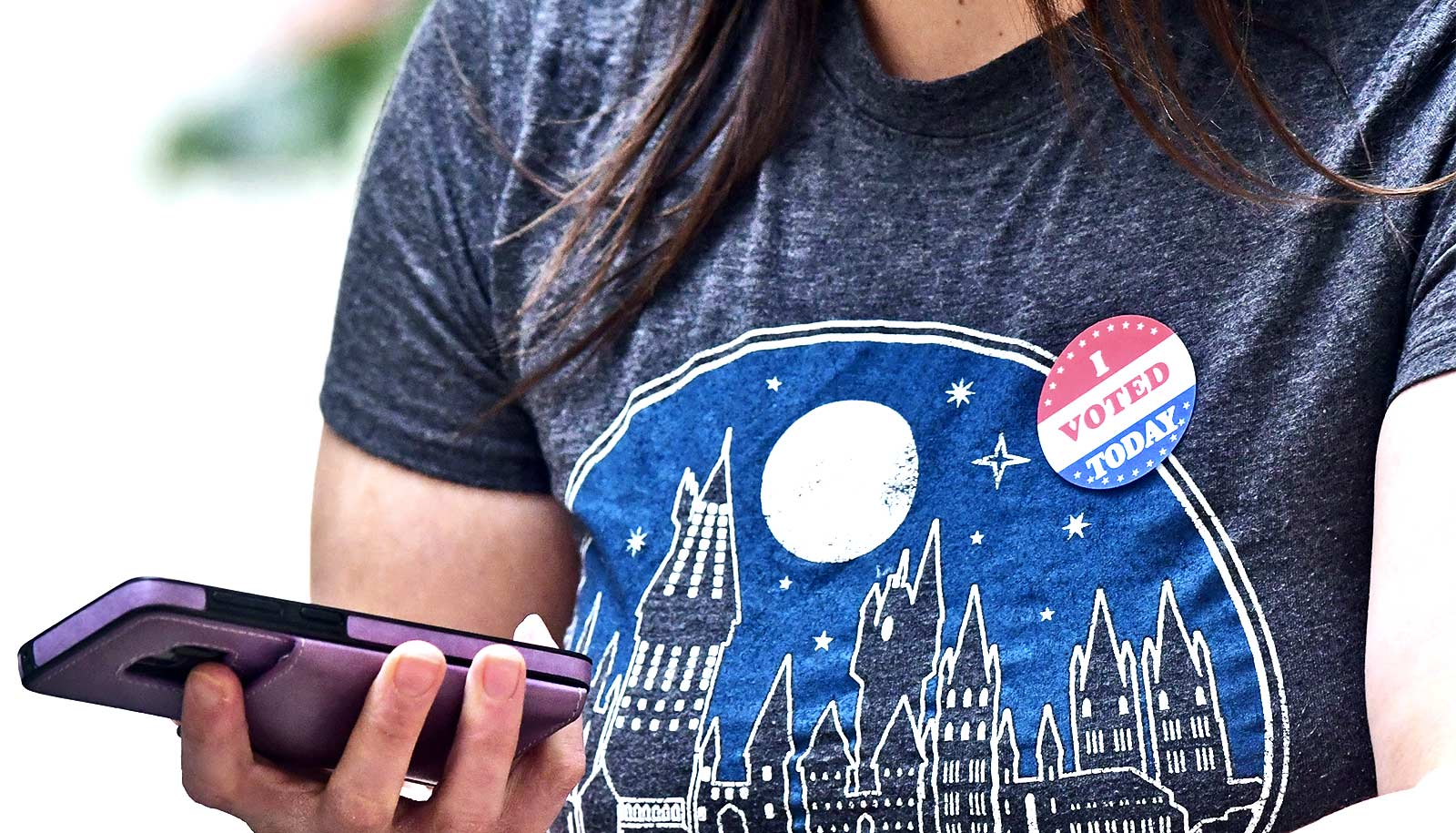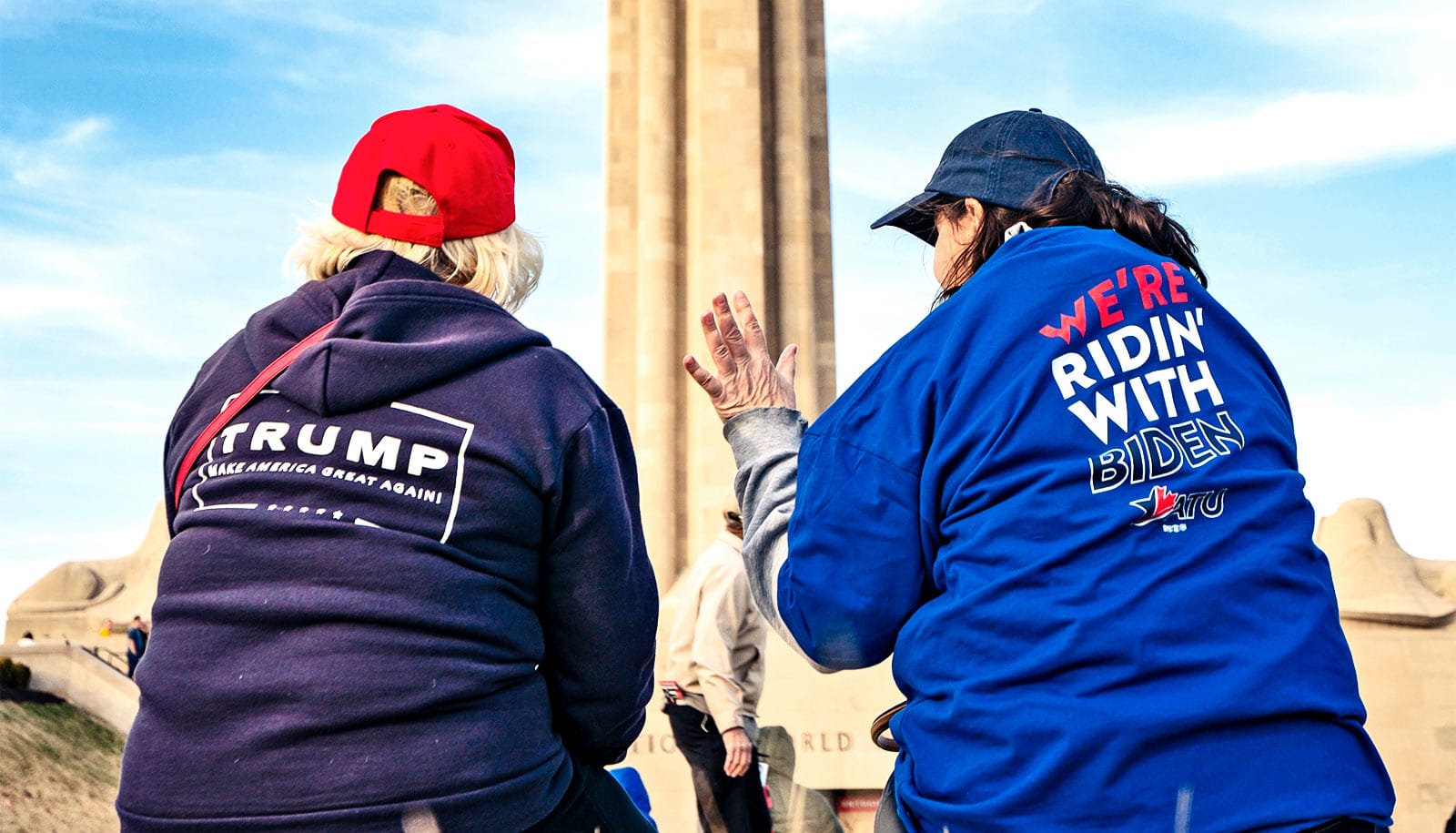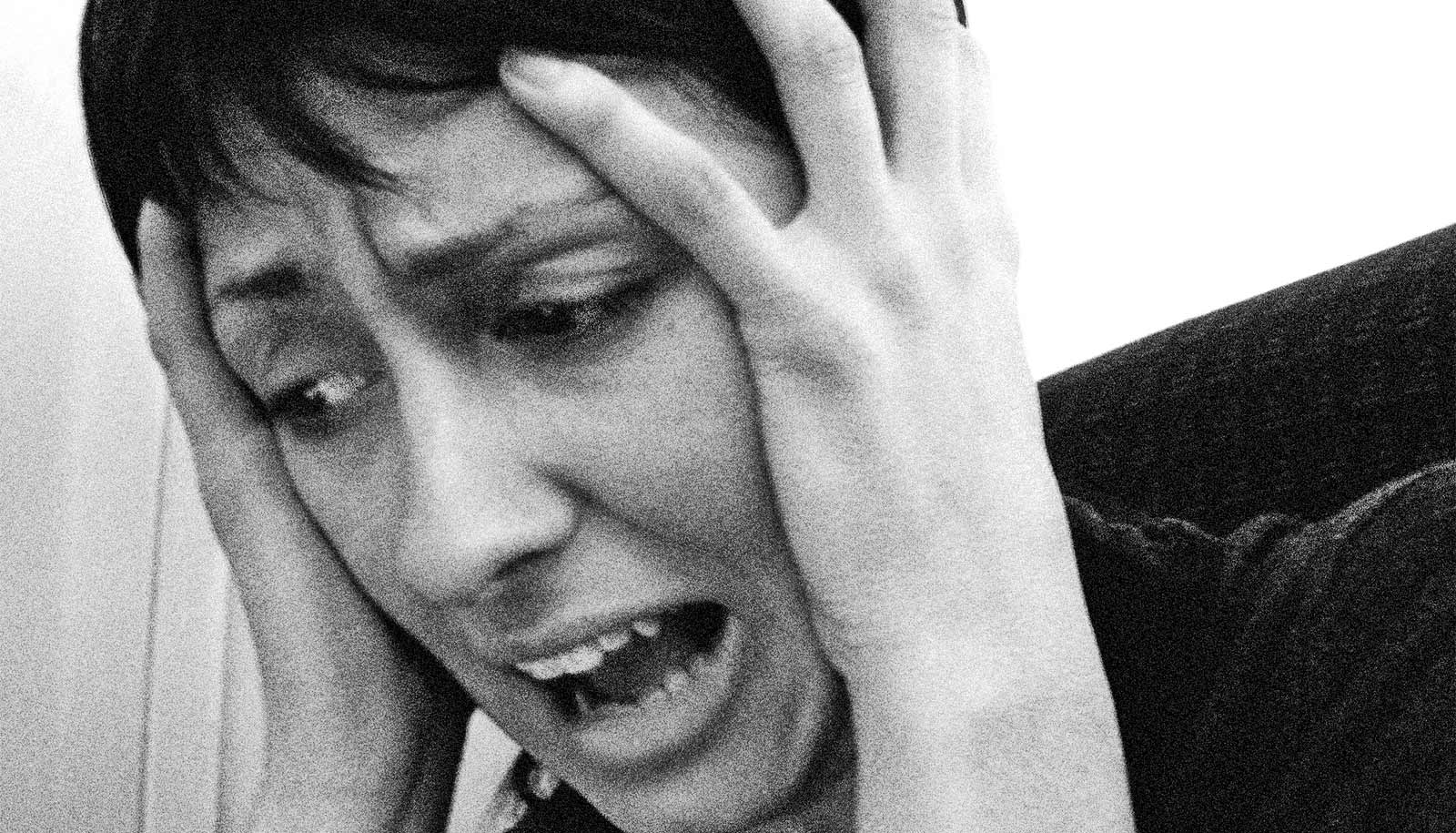Even for voters savvy enough to separate good information from bad, just feeling exposed to misinformation is enough to make them cynical about politics come Election Day, a new study shows.
In the days and weeks leading up to an election, sources bombard voters with information—in the form of news stories, social media posts, phone calls, text messages, and more. And in the age of “fake news,” not all of that information is reliable.
A new paper in New Media and Society explores how perceived exposure to false information—also termed misinformation or disinformation—affects political cynicism.
The researchers, assistant professor Dam Hee Kim, and professor Kate Kenski, both in the communications department at the University of Arizona, based ther findings on survey data from the 2018 US midterm elections.
Their work shows that the more people believe they are exposed to disinformation in the two weeks prior to an election, the more cynical they feel about politics when it’s time to vote.
Here, Kim and Kenski discuss why that matters and what it could mean in next week’s election:
How do you define political cynicism?
Kim: Political cynicism is the frustrating feeling that the political system is corrupt.
Kenski: It involves the perception that politicians make important decisions based on their self-interest and strategic planning rather than the interests of the voters.
What do we know from previous research about how political cynicism affects political engagement, and how could it impact this year’s election?
Kenski: When people lack trust in the government or hold cynical political views, concerns arise over how those feelings affect confidence in government, perceptions of electoral fairness, and perceptions about the accuracy of political information.
If people are cynical about their government, they may not adhere to the rules and laws, which may potentially undermine the system overall. If people do not believe in the voting system, for example, those concerns—whether legitimate or based on fabrications by political actors—may result in a lack of respect for or acknowledgment of the outcomes of the election.
Kim: This becomes a particular concern in today’s media environment, where it is rather easy for people to encounter and rely on sources that perpetuate rumors over fact—especially when those rumors support their side—and not look at evidence objectively.
Your study found that voters’ perceived exposure to disinformation in the days leading up to an election predicted political cynicism. Why do you think this is?
Kim: Misinformation or disinformation often contains negative information. While negativity in political information can attract the attention of people, it has long been known to erode faith in the political system.
Kenski: Prior to the past decade, this was a concern, but it wasn’t as large of a concern as it is today. We are living in an era in which we are surrounded by people expressing opinions with virtual megaphones but frequently basing those opinions on feelings and conjecture rather than scientific or empirical evidence.
Some of the opinions are self-serving for the speaker, and they set up the audience for the expectation that only the speaker or party can be trusted. When people feel that they have been exposed to “fake news,” regardless of whether the news actually contained inaccurate or misleading statements, they tend to feel discouraged about the political system.
Why look at perceived exposure rather than actual exposure?
Kenski: Perceptions matter in some ways more than actual exposure because it is our perceptions that guide our feelings, opinions, and behavior. In an experiment conducted by (University of Texas at Austin researchers Emily) Van Duyn and (Jessica) Collier in 2019, the results showed that exposure to political elites talking about fake news—rather than actual exposure to fake news—led people to lower their trust in the media.
Kim: Also, fake news comes in many forms that are hard to capture comprehensively without becoming invasive in the research subjects’ lives. In our study, we decided to focus on perceived exposure to misinformation or disinformation to assess what people were experiencing.
What differences did you find between social media and traditional media?
Kenski: We found that the use of both social media use and traditional news media positively predicts perceived misinformation or disinformation exposure, which cultivates political cynicism over time. The effects of social media use, however, appear stronger than those stemming from traditional news media use.
Kim: Social media could be an environment particularly rife with disinformation. On social media, news and information can be produced and distributed by ordinary users without professional editorial filtering or verification procedures in place.
In another study of ours, we also found that exposure to disagreement prompts political information sharing on social media, especially among people who think they understand the political truth rather than those who actually know about politics. While this is a concerning finding, it does help to explain why we found social media news use was particularly strong in predicting perceptions of misinformation or disinformation exposure and subsequent cynicism.
Your study finds that younger generations are more cynical. Why might that be?
Kenski: Younger people were no more likely than older respondents to perceive that they were exposed to disinformation, but we did find that those who were younger were more cynical. It is beyond the scope of our study to determine why, but it is worth noting that younger people have grown up in a media environment that is more fragmented than the formative media environments of their predecessors.
The intensity of the negativity and animosity between people of differing political ideologies has increased. Prior to the social media era, negativity was present, but it did not necessarily surround and immerse citizens the way it does today. Younger generations have not had as many experiences in which people from diverse backgrounds share the same content and then make decisions based on that shared understanding of the world. We suspect that chronic exposure to negative points of view has affected how young people see the political world.
Kim: This could be especially detrimental for younger generations as they are still in the process of political socialization, beginning to learn about politics and their civic duties.
How has the “fake news” landscape evolved, and what are the next steps for better understanding the social and political consequences of misinformation?
Kenski: While people are generally aware that “fake news” is out there, that knowledge of its existence is not enough to prevent people from falling prey to it when it enters their social media stream. People are often unaware of how social media algorithms send them down rabbit holes that do not provide a balanced view of perspectives or information based on scientific evidence. Outside actors—for example, Russian trolls—and some domestic players have incentives to keep people angry and divided. Social media companies claim to be trying to track, identify, and get rid of misinformation, but it is unclear how successful their efforts are.
The recent documentary The Social Dilemma raises questions about how social media affects us at a personal level, and the film is a good starting place for those who have not given much thought to how social media may impact them.
Kim: Exposure to disinformation may bring about other detrimental effects to our democracy in addition to political cynicism. We plan to continue working on understanding the political consequences of misinformation and disinformation, while paying particular attention to the role played by social media and social connections.
Source: University of Arizona



